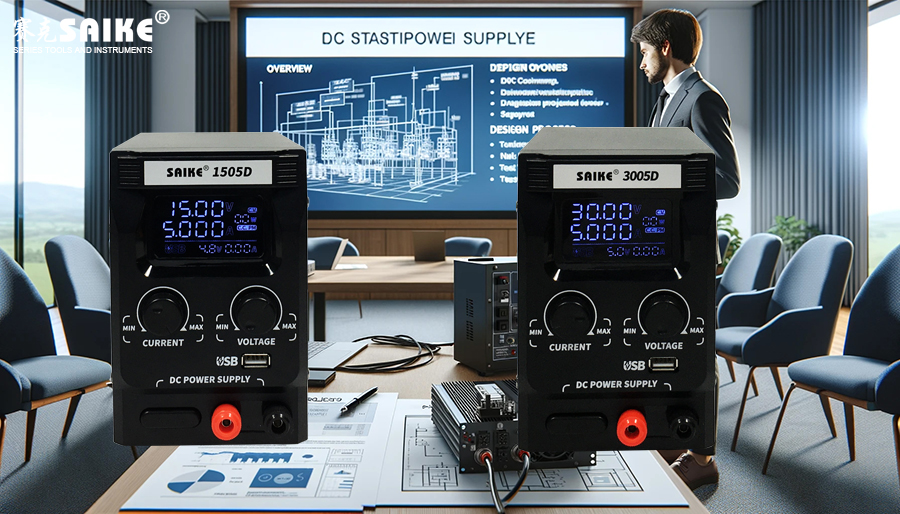
SK-YJ000ZLWYDY-KP 100032
I. Introduction
DC stabilized power supplies may encounter various faults during daily operations, such as unstable output voltage, low efficiency, or overheating. Effective troubleshooting and repair techniques are crucial for maintaining the normal operation of the power supply. This article will introduce some common troubleshooting steps and repair techniques.
II. Common Faults and Their Causes
1.Unstable or no output voltage
– Possible causes: insufficient input voltage, excessive output load, damaged key components (such as capacitors, voltage regulator chips), short circuits, or cold solder joints.
2.Excessively high output voltage
– Possible causes: feedback circuit issues, incorrect resistance values, or component parameter changes.
3.Overheating of the power supply
– Possible causes: overload, poor heat dissipation, damaged inductors or switching elements.
4.Excessive power supply noise
– Possible causes: aging or failure of output filtering capacitors, improper power line design.
III. Troubleshooting Steps
1.Visual inspection
– Check the circuit board for burn marks, damaged components, or loose connections.
– Confirm that all solder joints are intact and there are no cold solder joints or short circuits.
2.Measuring input voltage
– Use a digital multimeter to confirm that the input voltage meets the power supply design requirements.
3.Checking output voltage
– Measure the output voltage under different load conditions to see if it is stable and within the specified range.
4.Checking key components
– Measure the parameters of key components such as voltage regulator ICs, inductors, and capacitors to confirm that they are within the specified operating range.
– Use an oscilloscope to check the ripple and noise at the output end to assess whether the filtering capacitors need to be replaced.
IV. Fault Repair Techniques
1.Replacing damaged components
– After identifying which components are damaged, replace them in a timely manner. Especially key components such as capacitors, voltage regulator chips, and inductors.
2.Optimizing circuit layout
– If defects are found in the original design, such as excessively long wiring or electromagnetic interference issues, redesign the PCB layout.
3.Improving heat dissipation
– Add heat sinks, improve the layout of cooling fans, or add heat-conducting materials at hot spots.
4.Re-soldering
– Re-solder cold solder joints or suspected poor contacts to ensure good electrical connections.
V. Preventive Measures
1.Regular maintenance
– Regularly check the performance of the power supply, including measuring output voltage and checking component status.
2.Environmental control
– Ensure that the power supply operates in a suitable environment, avoiding excessively high temperatures and humidity.
3.Using reliable components
– Choose high-quality components that meet industry standards to reduce failure rates.
VI. Summary
Effective troubleshooting and repair of DC stabilized power supplies are crucial to ensuring stable power supply operation. By comprehensively applying the aforementioned techniques, problems can be quickly and accurately located and effectively repaired. Continuous monitoring and maintenance can also help identify potential problems early and avoid greater losses. This not only improves the reliability of the power supply but also extends the service life of the equipment.


